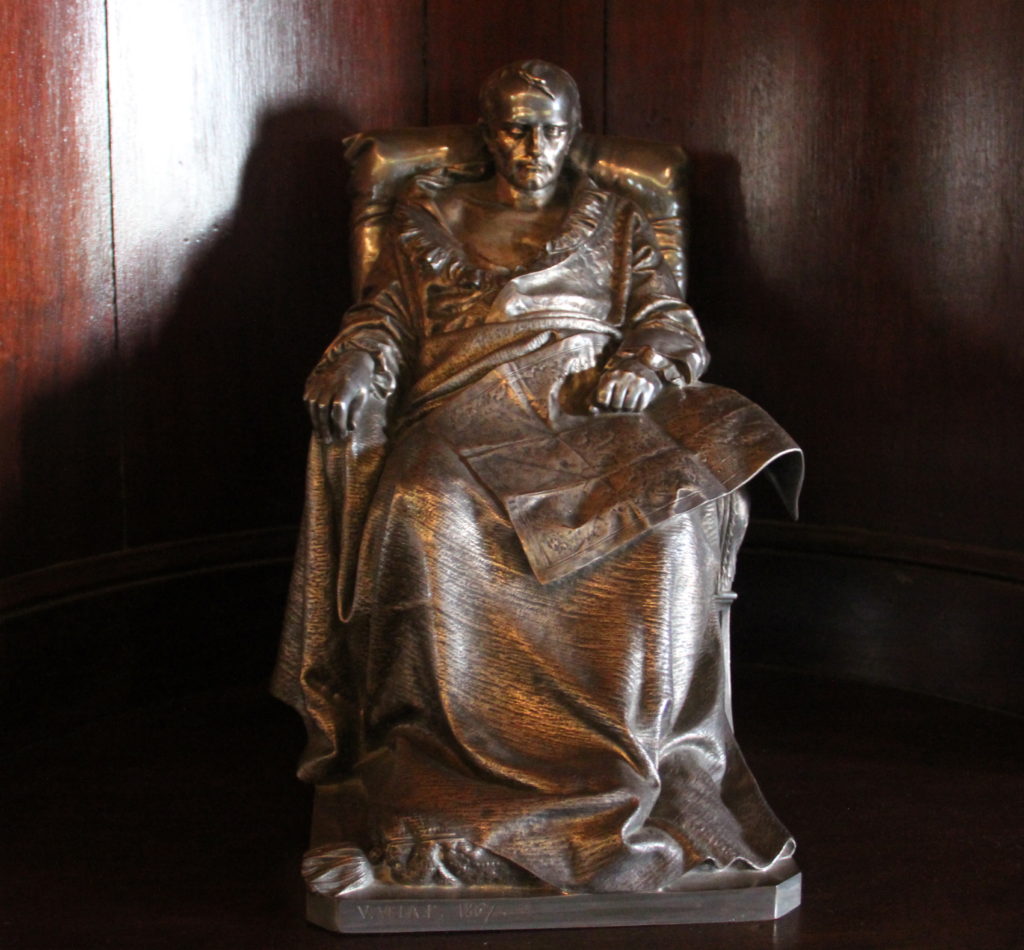
Napoleonic Links from St Helena to Cuba
As I posted in June 2011, Napoleon Bonaparte isn’t the only thing interesting about St Helena Island. After all, Napoleon’s exile, which ran from 1815 to 1821, only accounts for a moment in the island’s 500-year history. So this past year, when I wrote an article about links between St Helena and Cuba for the Friends of St Helena Society, I wrote about more than Napoleon.
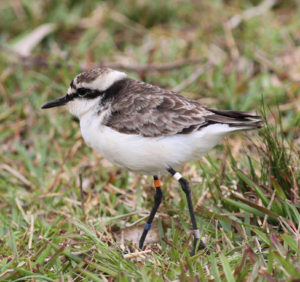 The society, based in the United Kingdom, comprises members of the St Helena diaspora or visitors like me. According to their website, they “encourage and sustain their interest in St Helena and, in addition, provide practical support for projects benefiting the Island.” Once a year they publish The Wirebird, a journal named after St Helena’s only endemic bird. In addition to Napoleon, my article in this year’s journal talked about the 18th-century transatlantic slave trade that links St Helena and Cuba.
The society, based in the United Kingdom, comprises members of the St Helena diaspora or visitors like me. According to their website, they “encourage and sustain their interest in St Helena and, in addition, provide practical support for projects benefiting the Island.” Once a year they publish The Wirebird, a journal named after St Helena’s only endemic bird. In addition to Napoleon, my article in this year’s journal talked about the 18th-century transatlantic slave trade that links St Helena and Cuba.
Here’s an excerpt (including photos) from the Napoleon portion. Like some of my prior posts, it discusses items Napoleon used in St Helena that are now in Havana.
Excerpt From My Article in The Wirebird, October 2018
Naturally, the Cuba’s Museo Napoleónico houses armaments and uniforms. There’s a set of Napoleon’s dueling pistols, many wonderful paintings, rooms of furniture, a fabulous chandelier from Napoleon and Josephine’s home in Paris, and many sculptures of Napoleon himself.
I found the items relating to St Helena particularly touching.
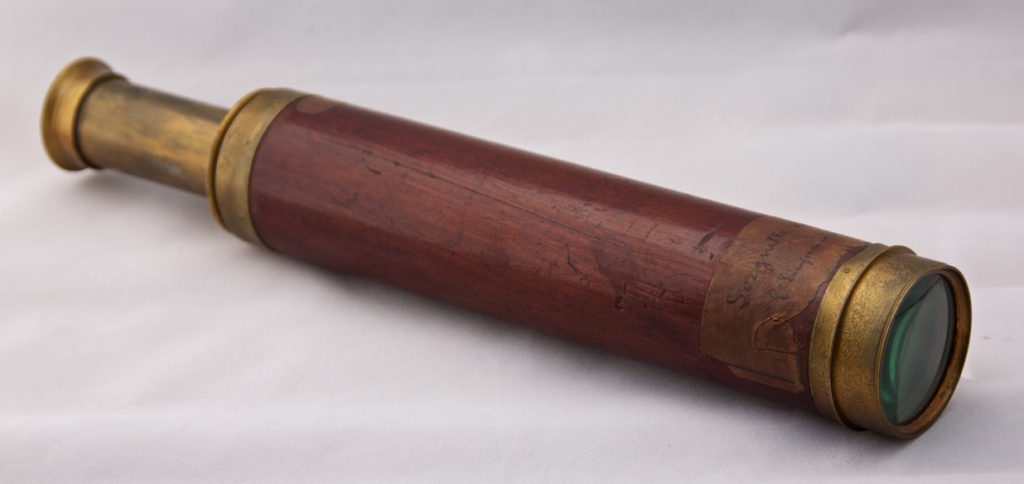
Among those is the spy glass Napoleon used on St Helena to scan the horizon for a rescue that never came. There’s also a miniature bronze statue [photo at top of post] showing Napoleon as an invalid on St Helena. It’s less than a foot tall, but expresses the Emperor’s dignity during his tragic end.
Napoleon’s Molar
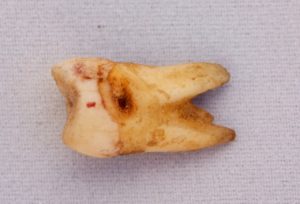 One of Napoleon’s molars is a less dignified artifact from St Helena. In a feat unusual for his era, Napoleon had managed to keep all his teeth. He was famously proud of their whiteness and took great care in their daily cleaning. It wasn’t until age fifty-one, during his exile on St Helena, that he lost an adult tooth.
One of Napoleon’s molars is a less dignified artifact from St Helena. In a feat unusual for his era, Napoleon had managed to keep all his teeth. He was famously proud of their whiteness and took great care in their daily cleaning. It wasn’t until age fifty-one, during his exile on St Helena, that he lost an adult tooth.
In their memoirs, members of his St Helena entourage report the Emperor suffered from the toothache in September, 1817. He had at least one molar pulled, presumably the one seen here. The valet Louis-Joseph Marchand wrote that Napoleon regretted the extraction since the tooth “was not spoiled at all.” Napoleon’s impish friend, fourteen-year-old Betsy Balcombe of the Briars, wanted “to make it into an earring and wear it for [Napoleon’s] sake.” Almost two hundred years later, it’s in Cuba.
Daisies Sent to Napoleon
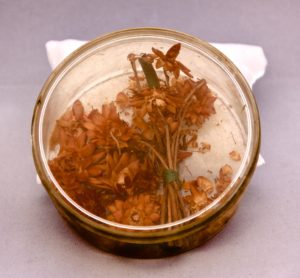 In the same cabinet as the molar, there’s a small jar of dried Everlasting Daisies, now colorless and crumbling. Most museum visitors might shrug past this St Helena artifact. I, however, was enchanted, remembering my photographs of the abundant gold flowers at Longwood House. A quote from a booklet I purchased in Longwood House tells of the flowers’ importance to Napoleon and St Helena:
In the same cabinet as the molar, there’s a small jar of dried Everlasting Daisies, now colorless and crumbling. Most museum visitors might shrug past this St Helena artifact. I, however, was enchanted, remembering my photographs of the abundant gold flowers at Longwood House. A quote from a booklet I purchased in Longwood House tells of the flowers’ importance to Napoleon and St Helena:
“Lady Holland sent from England some seedlings of the Everlasting Daisy . . . She said they would remind Napoleon of his native Corsica. These hardy flowers, which never die, now grow in proliferation all over the island and especially at Longwood. Their bright yellow flowers are a testament to the legend of Napoleon . . . [and] remain a poignant reminder of his exile.”
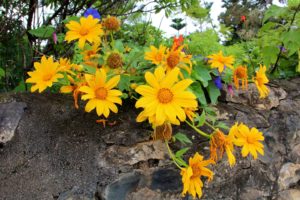 I haven’t discovered who carried this seemingly insignificant item from St Helena to Cuba. Although it must have pleased Julio Lobo [former owner of the museum’s collection], it felt out of place in a museum. I did wonder if the little jar had come to Cuba, not through a rich man’s ardent purchases, but from a personal connection to Napoleon on St Helena—the only member of the Emperor’s entourage who ended up in Cuba, his physician Dr. Francesco Antommarchi.
I haven’t discovered who carried this seemingly insignificant item from St Helena to Cuba. Although it must have pleased Julio Lobo [former owner of the museum’s collection], it felt out of place in a museum. I did wonder if the little jar had come to Cuba, not through a rich man’s ardent purchases, but from a personal connection to Napoleon on St Helena—the only member of the Emperor’s entourage who ended up in Cuba, his physician Dr. Francesco Antommarchi.
